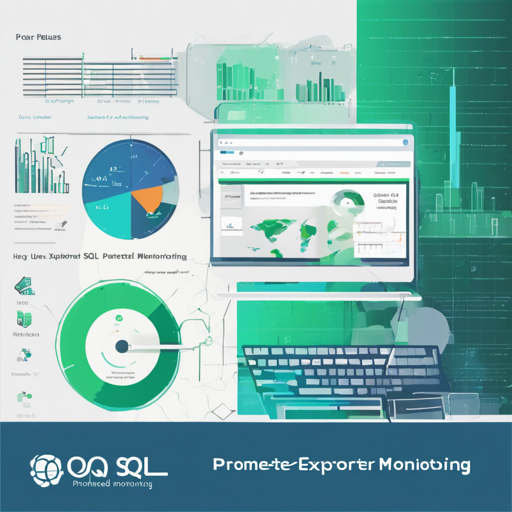Are you looking to track the performance and health of your database systems securely and effectively? SQL Exporter for Prometheus is a powerful tool that enables you to monitor various databases effortlessly. In this guide, we’ll walk you through the steps to set up and configure SQL Exporter to work with your systems while providing troubleshooting tips along the way.
Overview of SQL Exporter
SQL Exporter is a configuration-driven exporter that collects and exposes metrics from various Database Management Systems (DBMS) for the Prometheus monitoring system. It supports:
- MySQL
- PostgreSQL
- Microsoft SQL Server
- Clickhouse
- Snowflake
- Vertica
Additionally, if there’s a Go driver for your DBMS, you can monitor it by rebuilding the binary with the DBMS driver included. The key aspect is that the metrics and queries for them are all defined in the configuration file.
Setup and Configuration
Here’s how you can get started with SQL Exporter:
1. Installation
You can obtain SQL Exporter as a packaged release or as a Docker image.
2. Running SQL Exporter
After downloading, you can run the exporter using the CLI:
shell
./sql_exporter -help
This command will display the usage information. Important parameters to consider include:
- -config.file: SQL Exporter configuration file path (default is sql_exporter.yml)
- -web.listen-address: Address for web interface and telemetry (default is :9399)
- -web.metrics-path: Path to expose metrics (default is metrics)
3. Building the Exporter
If you want a custom build with selective drivers, follow these prerequisites:
- Go Compiler
- GNU Make
To create a binary with all supported drivers:
shell
make build
To produce a minimal binary with specific drivers:
shell
make drivers-minimal
make build
Configuration File
The configuration file (sql_exporter.yml) is integral to defining which metrics and collectors to use. Below is a sample of how this file can be structured:
global:
scrape_timeout_offset: 500ms
min_interval: 0s
max_connections: 3
max_idle_connections: 3
max_connection_lifetime: 10m
target:
name: prices_db
data_source_name: sqlserver:prom_user:prom_password@dbserver1.example.com:1433
collectors: [pricing_data_freshness, pricing_*]
enable_ping: true
collector_files:
- *.collector.yml
In this configuration, you define global settings, specify the target database, and adjust collector settings to suit your requirements.
Understanding the Code: An Analogy
Think of SQL Exporter as a restaurant kitchen staff, where each chef represents a different DBMS you can monitor (e.g., MySQL is the pizza chef, PostgreSQL is the pasta chef, etc.). The sql_exporter.yml file is like the recipe book where you outline how each chef should prepare their dishes (metrics). Some recipes might be popular (standard metrics) while others may be personalized to match customer demands (custom metrics based on your needs). Just like chefs can work together harmoniously, different collectors can run simultaneously against the database to ensure everything is cooked to perfection.
Troubleshooting
If you encounter any issues while using SQL Exporter, here are a few tips:
- Check for proper permissions on the database server.
- Ensure that the correct version of the Go driver is installed.
- If the exporter cannot connect to the database, confirm that the DSN is correctly formatted. Remember, special characters may require URL encoding!
- Refer to the Discussions or closed Issues for similar problems and solutions.
For additional questions or feedback, the community is active and responsive.
For more insights, updates, or to collaborate on AI development projects, stay connected with fxis.ai.
Stay Updated
At fxis.ai, we believe that such advancements are crucial for the future of AI, as they enable more comprehensive and effective solutions. Our team is continually exploring new methodologies to push the envelope in artificial intelligence, ensuring that our clients benefit from the latest technological innovations.

